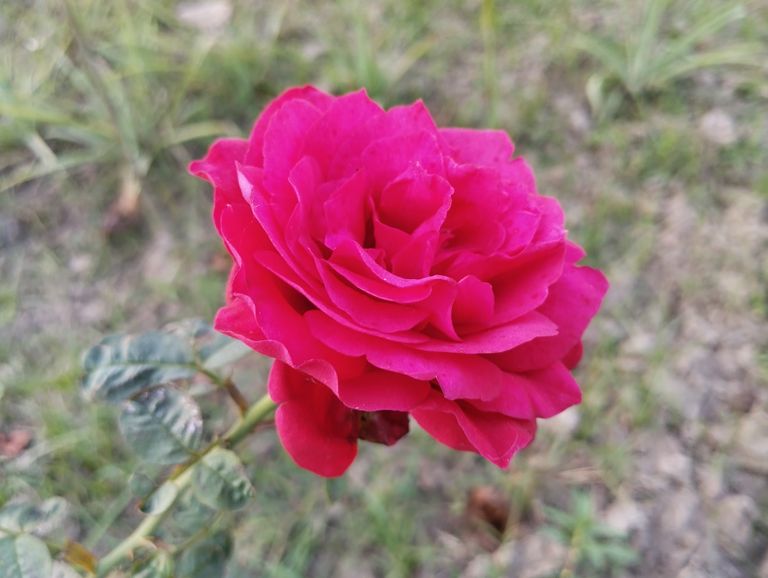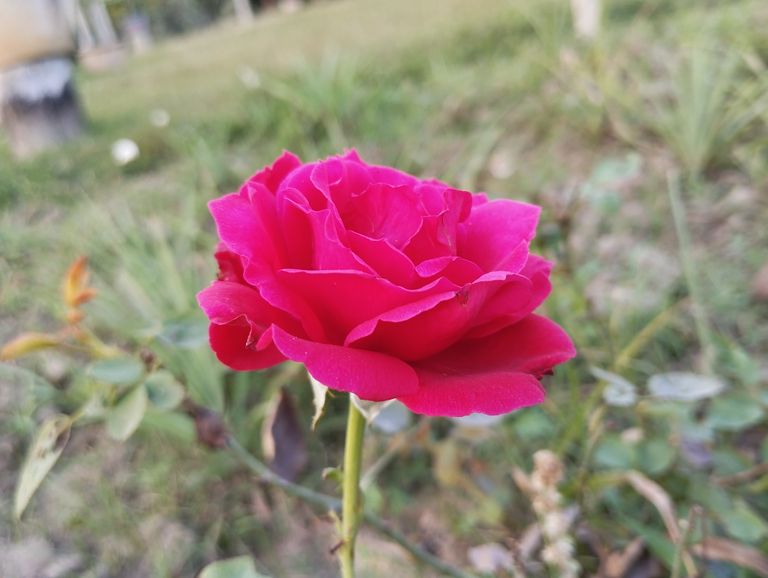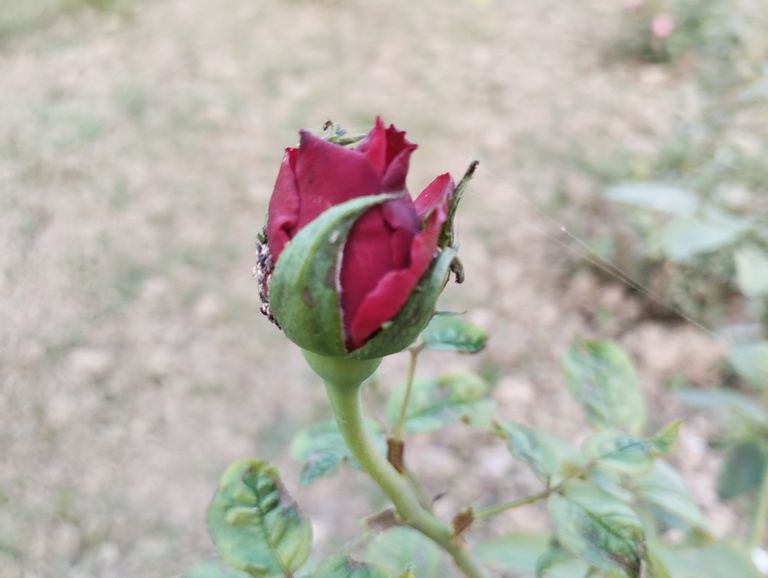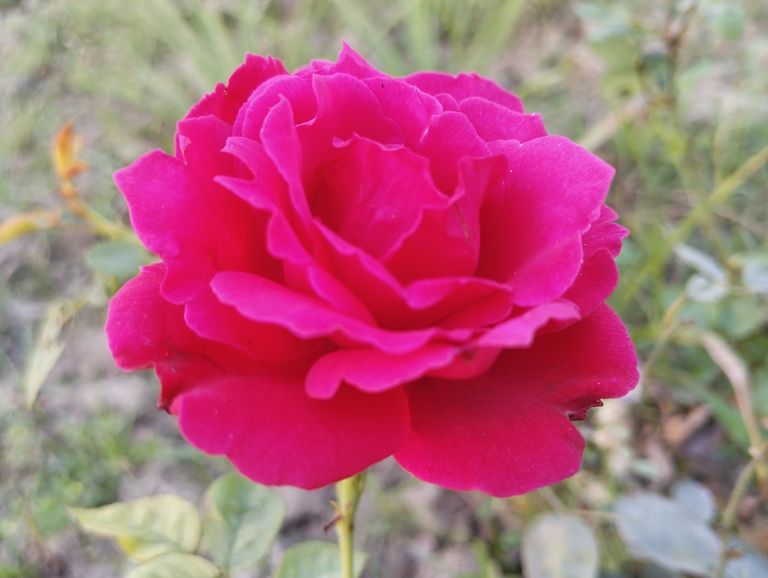
Is the Rose Flower Business Profitable? A Complete Guide.
Flowers have always been a symbol of love, beauty, and emotion, and among them, roses hold a special place. The demand for roses is high throughout the year, making rose farming and trading a lucrative business opportunity. Whether you are an aspiring entrepreneur or a farmer looking to diversify, the rose flower business can be a profitable venture if planned and executed correctly.
In this blog, we will explore the profitability of the rose business, how to start, costs involved, potential profits, and essential tips to succeed.
Why is the Rose Business Profitable?
The rose business is profitable due to several reasons:
- High Demand – Roses are used for decoration, gifting, and religious purposes. The demand peaks on occasions like Valentine’s Day, weddings, and festivals.
- Year-Round Market – Unlike seasonal crops, roses can be grown and sold throughout the year.
- Multiple Revenue Streams – You can earn from selling fresh roses, rose plants, rose water, essential oils, and dried petals.
- Export Potential – Roses have a significant international market, with countries like the Netherlands, India, Ecuador, and Kenya leading in exports.
Types of Roses to Grow for Business
Choosing the right variety of roses is crucial for maximizing profits. Here are some common types grown for commercial purposes:
- Hybrid Tea Roses
Large, single flowers with a long stem.
High demand in floriculture and bouquet making.
- Floribunda Roses
Clustered flowers, suitable for landscaping and home gardens.
Less maintenance required.
- Grandiflora Roses
A combination of Hybrid Tea and Floribunda.
Ideal for cut-flower production.
- Miniature Roses
Small-sized roses for decorative purposes.
Popular in home gardening and potted plant businesses.
- Climbing Roses
Grows vertically, used for wall decorations and trellises.
Choosing the right variety depends on your target market and climate conditions.
How to Start a Rose Business?
Starting a rose business requires careful planning and execution. Here’s a step-by-step guide:
- Research and Planning
Study market demand and competition in your area.
Identify potential customers, such as florists, wedding planners, and wholesalers.
Decide whether to sell fresh roses, plants, or rose-based products.
- Select a Suitable Location
Roses grow best in well-drained, fertile soil with good sunlight.
Ensure access to water and protection from extreme weather.
If growing on a large scale, consider greenhouse farming for better yield.
- Prepare the Land and Plant the Roses
Test soil pH (ideal range: 5.5 to 6.5).
Use organic fertilizers for better growth.
Maintain proper spacing (30–45 cm between plants) for air circulation.
- Invest in Irrigation and Pest Control
Drip irrigation is ideal for water conservation.
Use organic pesticides and fungicides to prevent diseases.
- Harvesting and Storage
Roses are ready for harvest within 8–10 weeks after planting.
Cut flowers early in the morning for freshness.
Store in a cool place to extend shelf life.
- Marketing and Selling
Partner with florists, event planners, and flower markets.
Sell online via social media, e-commerce platforms, and florist websites.
Export to international markets if feasible.
Cost and Profit Analysis
Investment Required
Potential Earnings
After deducting costs, the net profit per acre can range from $10,000 to $20,000 annually, depending on market conditions.
Tips for Success in the Rose Business
- Quality Matters – Always provide fresh, disease-free roses for better customer satisfaction.
- Use Modern Techniques – Greenhouses and drip irrigation improve yield and profits.
- Diversify Products – Sell potted plants, rose water, perfumes, and essential oils for additional revenue.
- Marketing Strategy – Leverage social media, create a brand, and collaborate with event organizers.
- Stay Updated – Follow floriculture trends and new farming techniques.
Conclusion
The rose flower business is a profitable venture with immense opportunities in both local and international markets. With proper planning, investment, and marketing strategies, you can earn a sustainable income from rose cultivation. Whether you start small or invest in large-scale farming, roses will always have a thriving market, making it a worthwhile business choice. If you are passionate about flowers and agribusiness, the rose business could be your gateway to success.


Proper Fertilization for Rose Plants: A Complete Guide
Roses are one of the most beautiful and popular flowers in the world. To keep rose plants healthy, vibrant, and full of blooms, proper fertilization is essential. In this guide, we will explore the right way to fertilize rose plants, the best types of fertilizers, application methods, and seasonal care tips.
Why Fertilization is Important for Roses?
Roses require essential nutrients to grow, bloom, and resist diseases. The three primary nutrients necessary for rose plants are:
Nitrogen (N) – Promotes healthy green leaves and stems.
Phosphorus (P) – Encourages root development and flower production.
Potassium (K) – Improves overall plant health and disease resistance.
Without proper fertilization, roses may have weak stems, small blooms, and poor disease resistance.
Best Types of Fertilizers for Roses
- Organic Fertilizers
Organic fertilizers improve soil health and provide long-term nourishment. Some of the best organic fertilizers for roses include:
Compost – Provides a balanced mix of nutrients and improves soil structure.
Manure – Well-rotted cow, horse, or chicken manure is an excellent natural fertilizer.
Bone Meal – A great source of phosphorus, essential for strong roots and flower production.
Fish Emulsion – Rich in nitrogen, promoting lush green foliage.
Banana Peels – Contains potassium, which helps in blooming and disease resistance.
- Chemical Fertilizers
If you need faster results, chemical fertilizers can be beneficial. Look for a balanced fertilizer with an N-P-K ratio of 10-10-10 or 12-12-12.
Other options include:
Slow-Release Granular Fertilizer – Provides nutrients gradually over time.
Water-Soluble Fertilizer – Dissolves in water and delivers nutrients quickly.
Liquid Fertilizer – Easily absorbed by the roots and leaves.
When to Fertilize Rose Plants?
Spring (Before Blooming)
Apply a balanced fertilizer (10-10-10) when new growth appears.
Organic options like compost and manure can be added to enrich the soil.
During the Growing Season (Summer)
Feed roses every 4–6 weeks with a balanced fertilizer.
Use a high-phosphorus fertilizer before the main blooming period.
After Blooming (Late Summer/Early Fall)
Reduce nitrogen intake to prepare the plant for dormancy.
Apply potassium-rich fertilizers to strengthen the plant before winter.
Winter (Dormant Season)
Stop fertilizing in cold months to allow the plant to rest.
How to Apply Fertilizer to Rose Plants?
Step 1: Choose the Right Fertilizer
Decide between organic or chemical fertilizer based on your preference.
Step 2: Apply at the Right Time
Morning or evening is the best time to fertilize roses to prevent nutrient loss due to evaporation.
Step 3: Spread the Fertilizer Properly
Granular Fertilizer: Sprinkle around the base of the plant and water well.
Liquid Fertilizer: Mix with water and apply directly to the soil and leaves.
Step 4: Water Thoroughly
After fertilizing, water deeply to help the nutrients reach the roots.
Step 5: Mulching
Adding mulch around the base helps retain moisture and improves soil fertility.
Common Fertilization Mistakes to Avoid
Over-Fertilization – Can burn roots and weaken the plant.
Under-Fertilization – Leads to weak growth and fewer flowers.
Using Only One Type of Fertilizer – A mix of organic and chemical fertilizers gives the best results.
Applying Fertilizer on Dry Soil – Always water before fertilizing to avoid root damage.
Conclusion
Proper fertilization is key to growing healthy and vibrant rose plants. Using a combination of organic and chemical fertilizers, applying them at the right time, and following correct techniques will ensure that your roses bloom beautifully throughout the season. Would you like additional tips on pest control or pruning for your rose plants? Let me know.

How to Propagate Rose Plants from Cuttings (Step-by-Step Guide)
Roses are among the most beautiful and beloved flowers in the world. While many gardeners grow roses from seeds or grafting, propagation from cuttings is one of the easiest and most effective methods. This technique, known as "cutting propagation," allows you to grow new rose plants from a parent plant without needing seeds.
In this blog, we will guide you through the step-by-step process of propagating rose plants using cuttings.
Benefits of Growing Roses from Cuttings
- Easy and Cost-Effective: No need to buy seeds or grafted plants.
- Faster Growth: Rose cuttings develop roots quickly and grow into mature plants faster than seeds.
- Cloning the Parent Plant: The new plant will have the same characteristics as the original rose bush.
- Increases Success Rate: Compared to growing from seeds, cuttings have a higher chance of successful propagation.
Materials Needed for Rose Propagation
Before you start, gather the following materials:
Healthy rose stems (6-8 inches long)
Sharp pruning shears or a knife
Rooting hormone (optional but recommended)
Small pots or containers
Well-draining potting mix (such as a mixture of soil, sand, and compost)
Transparent plastic bag or a plastic bottle
Watering can
Gloves (to protect from thorns)
Step-by-Step Guide to Growing Roses from Cuttings
Step 1: Selecting the Right Stem for Cuttings
Choose a healthy, disease-free rose stem from a mature plant.
The stem should be semi-hardwood (not too young or too old) and about 6-8 inches long.
Make sure it has at least 3-4 leaf nodes (the small bumps where leaves grow).
Step 2: Cutting and Preparing the Stem
Use sharp pruning shears to make a clean cut at a 45-degree angle just below a node.
Remove all leaves from the lower half of the cutting. This helps reduce water loss and promotes root growth.
If there are any flowers or buds, remove them to focus the plant's energy on root development.
Step 3: Applying Rooting Hormone (Optional but Recommended)
Dip the bottom end of the cutting in a rooting hormone powder or gel.
This helps stimulate root growth and increases the success rate of propagation.
Step 4: Planting the Cutting in Soil
Fill a small pot or container with well-draining potting mix.
Make a hole in the soil using a stick or pencil.
Insert the cutting about 2-3 inches deep and gently press the soil around it.
Water the soil lightly to keep it moist but not soggy.
Step 5: Creating a Greenhouse Effect
To maintain humidity, cover the cutting with a plastic bag or a plastic bottle (cut in half).
This helps retain moisture and provides a stable environment for root development.
Keep the container in a warm, bright place with indirect sunlight.
Step 6: Watering and Caring for the Cutting
Keep the soil moist but avoid overwatering, as excess moisture can cause rot.
Mist the cutting occasionally to maintain humidity.
Check for new growth after 2-4 weeks, which indicates successful rooting.
Transplanting the Rooted Rose Cutting
After 4-6 weeks, if you notice new leaves and strong roots, it’s time to transplant the cutting into a bigger pot or directly into your garden.
Steps for Transplanting:
- Carefully remove the cutting from the pot without damaging the roots.
- Plant it in nutrient-rich garden soil or a larger container.
- Water the plant regularly and provide partial sunlight until it becomes stronger.
- After a few weeks, the plant will be ready for full sunlight and normal care.
Common Mistakes to Avoid
Using unhealthy cuttings: Always choose disease-free and strong stems.
Overwatering: Excess water can cause rotting, so keep the soil slightly moist.
Lack of humidity: Without enough humidity, the cutting may dry out before rooting.
Too much direct sunlight: Harsh sunlight can stress the cutting before it establishes roots.
Conclusion
Propagating roses from cuttings is a rewarding and simple gardening technique that allows you to grow beautiful roses without spending money on new plants. By following these steps carefully, you can successfully create new rose plants and expand your garden with minimal effort.
Try this method, and soon, you’ll have a garden full of vibrant, home-grown roses. Would you like to learn about caring for rose plants after propagation? Let us know in the comments.

How to Propagate Rose Plants from Cuttings (Step-by-Step Guide)
Roses are among the most beautiful and beloved flowers in the world. While many gardeners grow roses from seeds or grafting, propagation from cuttings is one of the easiest and most effective methods. This technique, known as "cutting propagation," allows you to grow new rose plants from a parent plant without needing seeds.
In this blog, we will guide you through the step-by-step process of propagating rose plants using cuttings.
Benefits of Growing Roses from Cuttings
- Easy and Cost-Effective: No need to buy seeds or grafted plants.
- Faster Growth: Rose cuttings develop roots quickly and grow into mature plants faster than seeds.
- Cloning the Parent Plant: The new plant will have the same characteristics as the original rose bush.
- Increases Success Rate: Compared to growing from seeds, cuttings have a higher chance of successful propagation.
Materials Needed for Rose Propagation
Before you start, gather the following materials:
Healthy rose stems (6-8 inches long)
Sharp pruning shears or a knife
Rooting hormone (optional but recommended)
Small pots or containers
Well-draining potting mix (such as a mixture of soil, sand, and compost)
Transparent plastic bag or a plastic bottle
Watering can
Gloves (to protect from thorns)
Step-by-Step Guide to Growing Roses from Cuttings
Step 1: Selecting the Right Stem for Cuttings
Choose a healthy, disease-free rose stem from a mature plant.
The stem should be semi-hardwood (not too young or too old) and about 6-8 inches long.
Make sure it has at least 3-4 leaf nodes (the small bumps where leaves grow).
Step 2: Cutting and Preparing the Stem
Use sharp pruning shears to make a clean cut at a 45-degree angle just below a node.
Remove all leaves from the lower half of the cutting. This helps reduce water loss and promotes root growth.
If there are any flowers or buds, remove them to focus the plant's energy on root development.
Step 3: Applying Rooting Hormone (Optional but Recommended)
Dip the bottom end of the cutting in a rooting hormone powder or gel.
This helps stimulate root growth and increases the success rate of propagation.
Step 4: Planting the Cutting in Soil
Fill a small pot or container with well-draining potting mix.
Make a hole in the soil using a stick or pencil.
Insert the cutting about 2-3 inches deep and gently press the soil around it.
Water the soil lightly to keep it moist but not soggy.
Step 5: Creating a Greenhouse Effect
To maintain humidity, cover the cutting with a plastic bag or a plastic bottle (cut in half).
This helps retain moisture and provides a stable environment for root development.
Keep the container in a warm, bright place with indirect sunlight.
Step 6: Watering and Caring for the Cutting
Keep the soil moist but avoid overwatering, as excess moisture can cause rot.
Mist the cutting occasionally to maintain humidity.
Check for new growth after 2-4 weeks, which indicates successful rooting.
Transplanting the Rooted Rose Cutting
After 4-6 weeks, if you notice new leaves and strong roots, it’s time to transplant the cutting into a bigger pot or directly into your garden.
Steps for Transplanting:
- Carefully remove the cutting from the pot without damaging the roots.
- Plant it in nutrient-rich garden soil or a larger container.
- Water the plant regularly and provide partial sunlight until it becomes stronger.
- After a few weeks, the plant will be ready for full sunlight and normal care.
Common Mistakes to Avoid
Using unhealthy cuttings: Always choose disease-free and strong stems.
Overwatering: Excess water can cause rotting, so keep the soil slightly moist.
Lack of humidity: Without enough humidity, the cutting may dry out before rooting.
Too much direct sunlight: Harsh sunlight can stress the cutting before it establishes roots.
Conclusion
Propagating roses from cuttings is a rewarding and simple gardening technique that allows you to grow beautiful roses without spending money on new plants. By following these steps carefully, you can successfully create new rose plants and expand your garden with minimal effort.
Try this method, and soon, you’ll have a garden full of vibrant, home-grown roses!
Would you like to learn about caring for rose plants after propagation? Let us know in the comments.